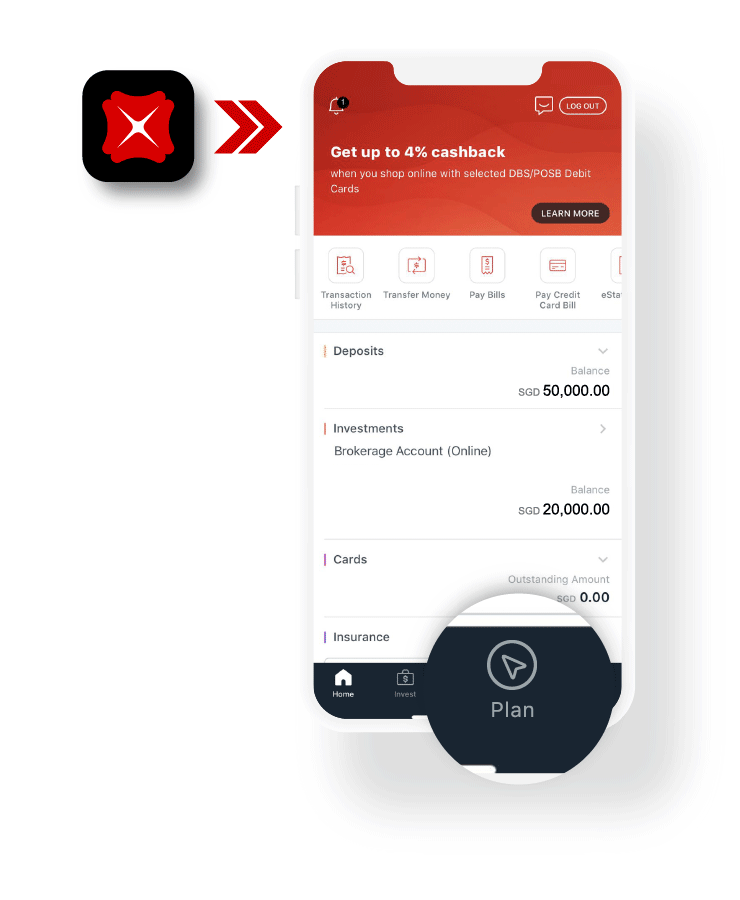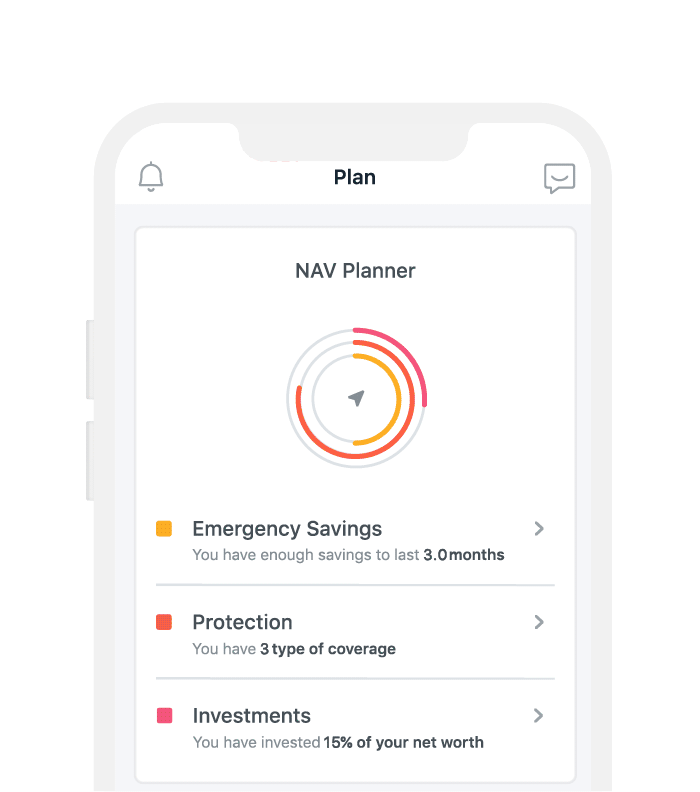![]()
If you’ve only got a minute:
- Knowing your true net worth can give you a more holistic picture of your financial status than simply looking at your monthly cashflow.
- Syncing your digibank with SGFindex can help you consolidate your savings and debts from other bank accounts to have a clearer view of your net worth.
![]()
Knowing your net worth is key when it comes to your finances. Understanding your net worth helps you find out how you’ve been saving and spending. It also guides you to plan your financial goals, letting you know how near or far you are from meeting them.
You may have already developed some pretty good personal finance habits using the money-in-money-out feature, such as:
- Track your monthly expenses to ensure you're earning more than you spend
- Saving a fixed amount each month
- Built up emergency savings of at least 6 months during a crisis
It’s good if you just want a picture of how you are doing month after month, however, this method says little about your overall financial situation. When it comes to getting on top of your personal finances, tracking your expenses has its limits.
To level up, you’ll need a view of your overall financial situation. That is where the “Net Worth” view is helpful.
Why it’s important to know your net worth
Your net worth is the value of all your assets minus all your liabilities.
![]()
A personal asset is anything you own that has monetary value. If you own it and can sell it, it is an asset. A liability is anything that you owe and eventually have to pay back.
All your assets and liabilities with DBS have already been automatically added. If the numbers don’t add up, you’ll just need to connect your other banks’ accounts, loans and CPF to get a complete picture of your net worth.
Find out more about getting started with SGFinDex.
Discovering your net worth for the first time can be daunting, which may cause you to delay the process and avoid facing it altogether. However, your personal net worth holds great importance, as it serves as in indicator of how efficiently you are handling your finances by revealing your assets and liabilities.
Doing so will help you monitor and see how one financial decision may affect another. You can gain greater transparency and make informed investment decisions to achieve financial wellness.
The same principle can be applied to your personal balance sheet. Let’s say you have $50,000 after subtracting your liabilities. How are you making use of this $50,000 to grow your personal wealth efficiently? Are you leaving them to grow at 0.05% a year, or putting them in a higher interest savings account like the Multiplier, or investing them in stocks?
If you're wondering what your net worth is, here’s how the ”Plan” tab on digibank does the calculation for you – all you have to do is interpret it.
![]()
How to keep track of your personal finances with digibank
This is what it could look like in practice:
![]()
Updating your Assets
- Cash
This includes all the emergency savings and spare cash you have. When you spend money with your DBS cards, or PayLah!, the amount of cash in your accounts will automatically be reflected in your assets view.
To get as accurate an account of your cash assets as possible, simply add in your cash deposits with other banks.
Tip: Track your spending efficiently with the Money-In-Money-Out (MIMO) feature. It automatically categorises your expenditure into buckets such as shopping, entertainment & leisure, and fees & charges, which makes it easier to identify areas to cut down on your spending.
- Central Provident Fund (CPF) savings
This is an essential item to add into the digibank, as CPF savings form the foundation of our retirement plan. You can even specify which type of CPF account it is (Ordinary Account, Special Account…etc) because the tool considers the different rates and rules, to give you an accurate picture of the total funds in your CPF.
- Investments
All investments with DBS are automatically included. But for an accurate picture, add in your investments that are with other financial institutions too! The “Plan” tab on digibank taps on live price feeds for all your equity and unit trust holdings, so that your investment assets are always showing up-to-date information.
- Properties
If you own a house, it probably accounts for a huge chunk of your assets, and doubly so if you own an investment property. Updating the property values in digibank will result in a more thorough picture of your assets and liabilities as it factors in your mortgage loan.
Updating your Liabilities
Some of the liabilities that you can input into digibank include mortgage loan, personal loan, study loan and short-term credit with other financial institutions.
Interpreting the information - What does it mean if my net worth is negative?
In theory, your net worth is the value in cash if you were to sell everything you own and pay off all your debts. If this number is negative, it means you have more liabilities than assets.
You may get a shock if your net worth is negative, but this can be a common scenario for certain groups of people, such as fresh graduates who are just starting their careers and still paying off an education loan for example. If you have used a large amount of capital to start your new business, it may result in negative net worth too.
There are ways to right this by making efficient use of what you have. Financial planning is a process. You just need to make sure you get better at money along the way!
How to get better at money?
The “Plan” tab on digibank seeks to provide structure to your personal balance sheet by providing cues on the items that you can start to tackle first. For instance;
- Beef up your emergency savings
This is particularly important if your cash savings is less than 3 times of your monthly income. Start by tracking your expenses, spending more mindfully and finally, setting up a monthly budget. Consider keeping your cash savings in high interest rate accounts such as the Multiplier account that helps you grow your money faster than a basic deposit account. - Make debt repayment a priority
This applies if your net worth is projected to stay negative for some time. Consider refinancing your home loan to enjoy some savings. - Consolidate your debts
If your debt is growing faster than your assets, you may want to consolidate your debts at a lower interest rate to help accelerate your debt payoff. - Start investing if you haven’t
If you already have your emergency cash stashed away (at least 3 to 6 months of monthly expenses), consider investing.
It is a good way to beat inflation, grow your assets and ultimately, build your total net worth.
Find out your net worth in 2 easy steps!
| STEP 1: Open digibank Log in to digibank and look for the Plan tab.
| STEP 2: Update your non-DBS cash, CPF, investments, property value, home loan, car loan:
|





